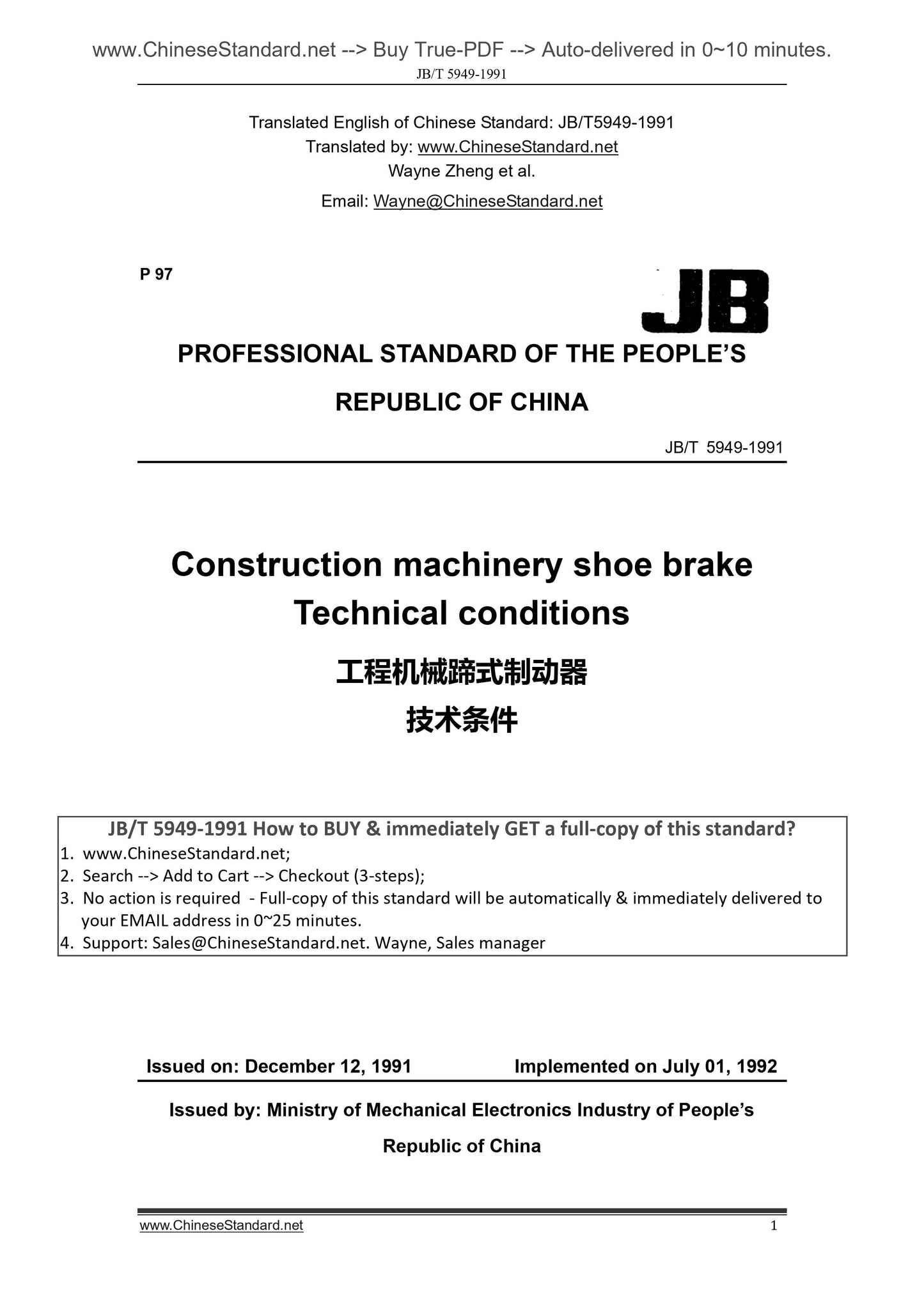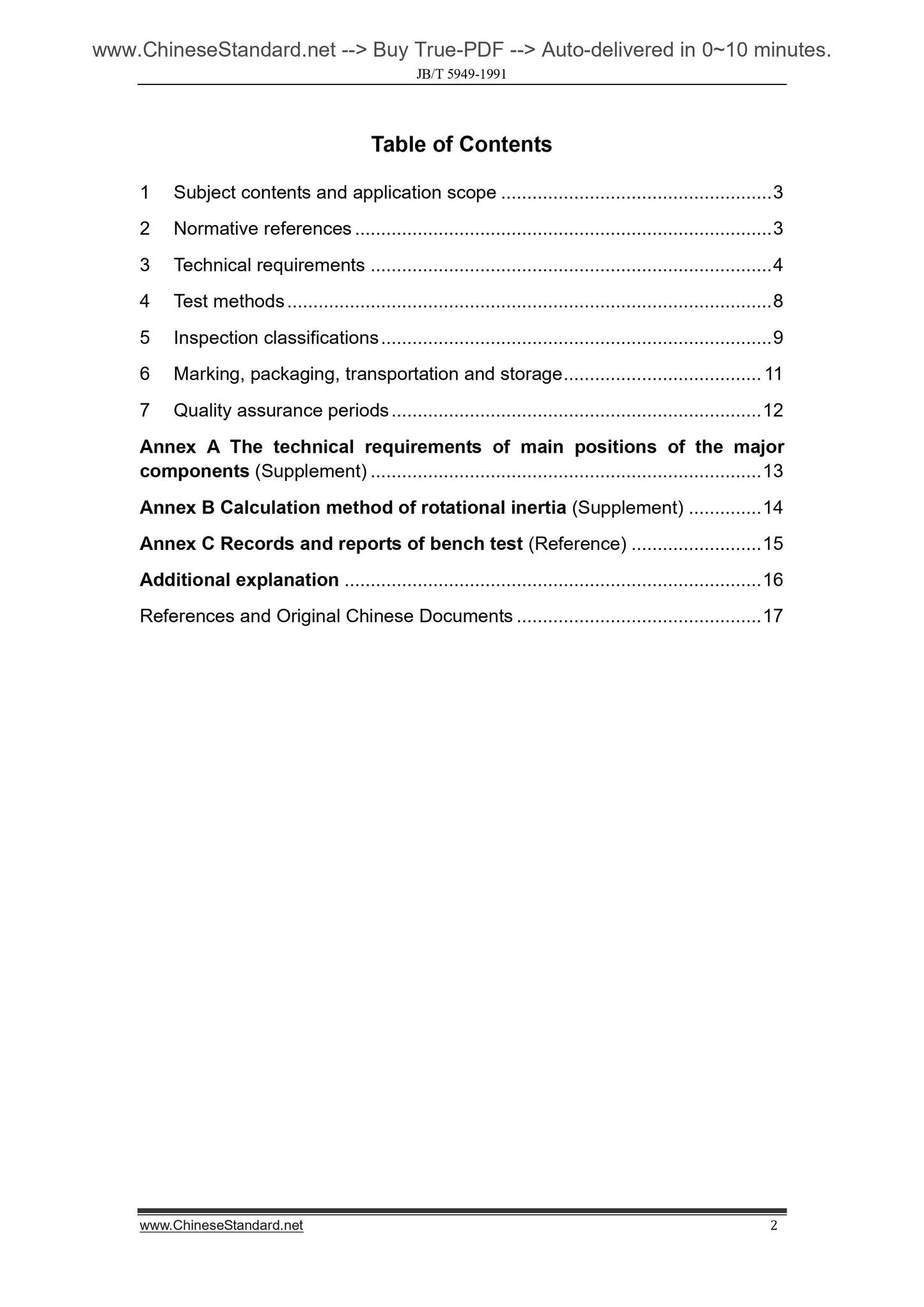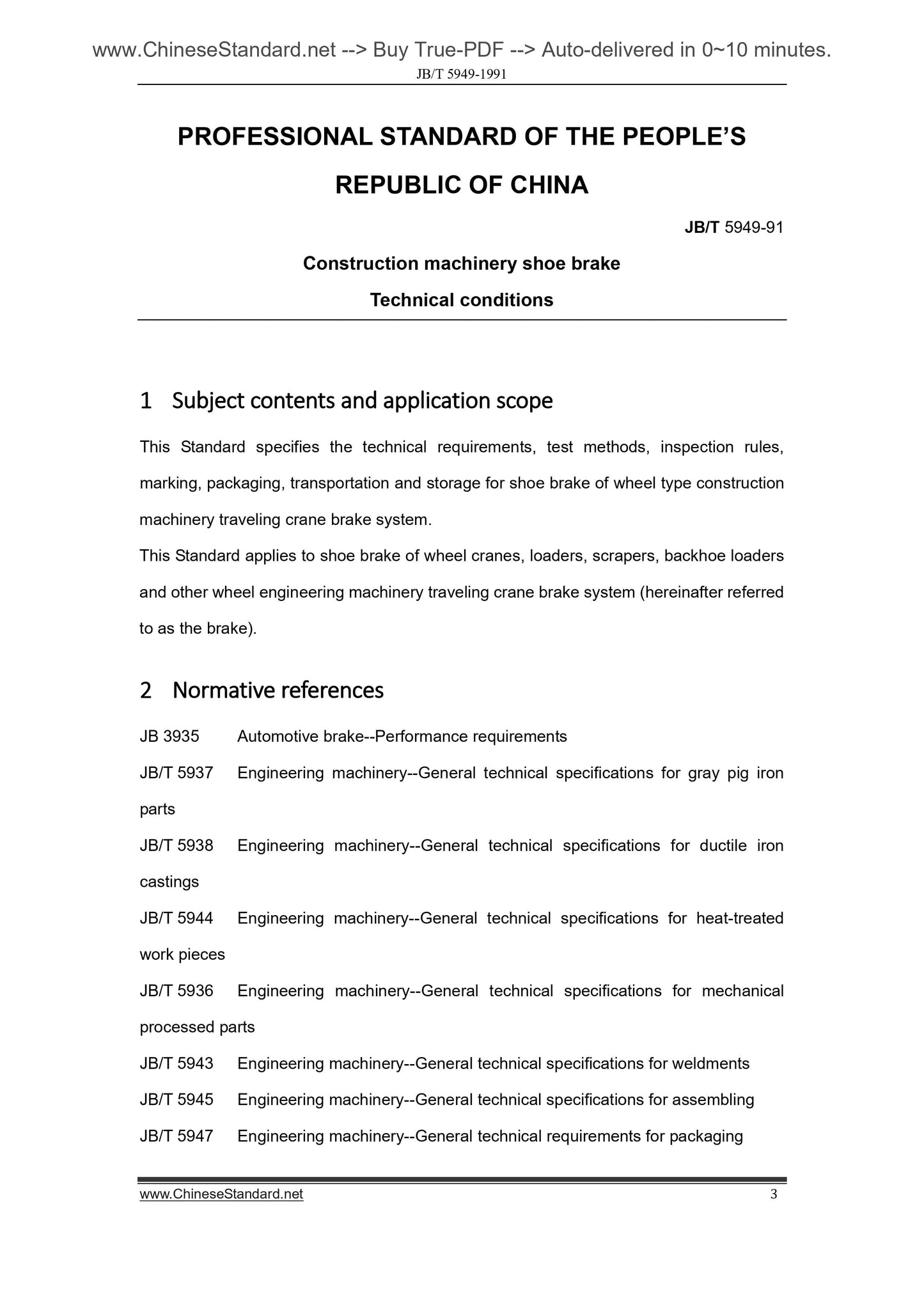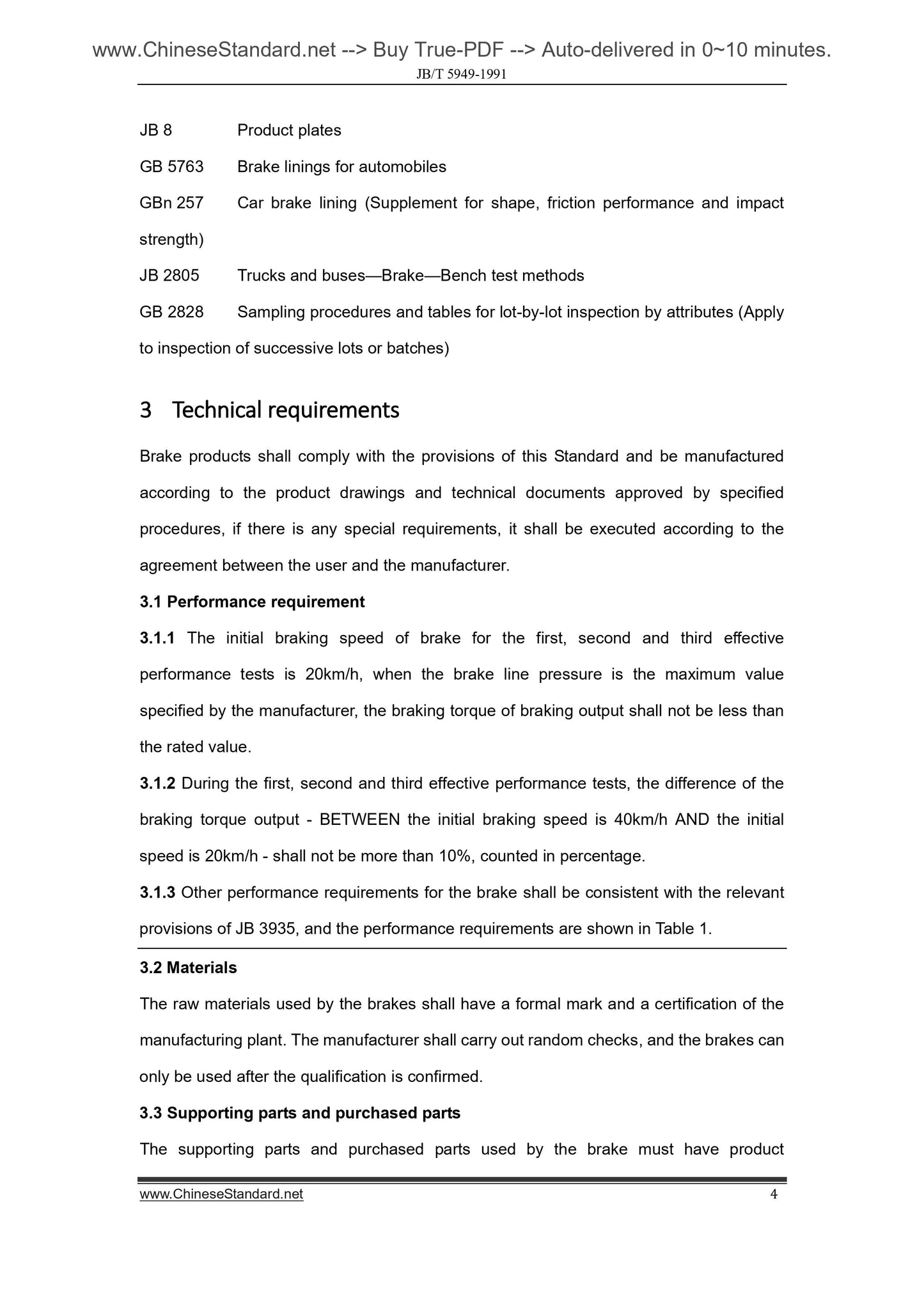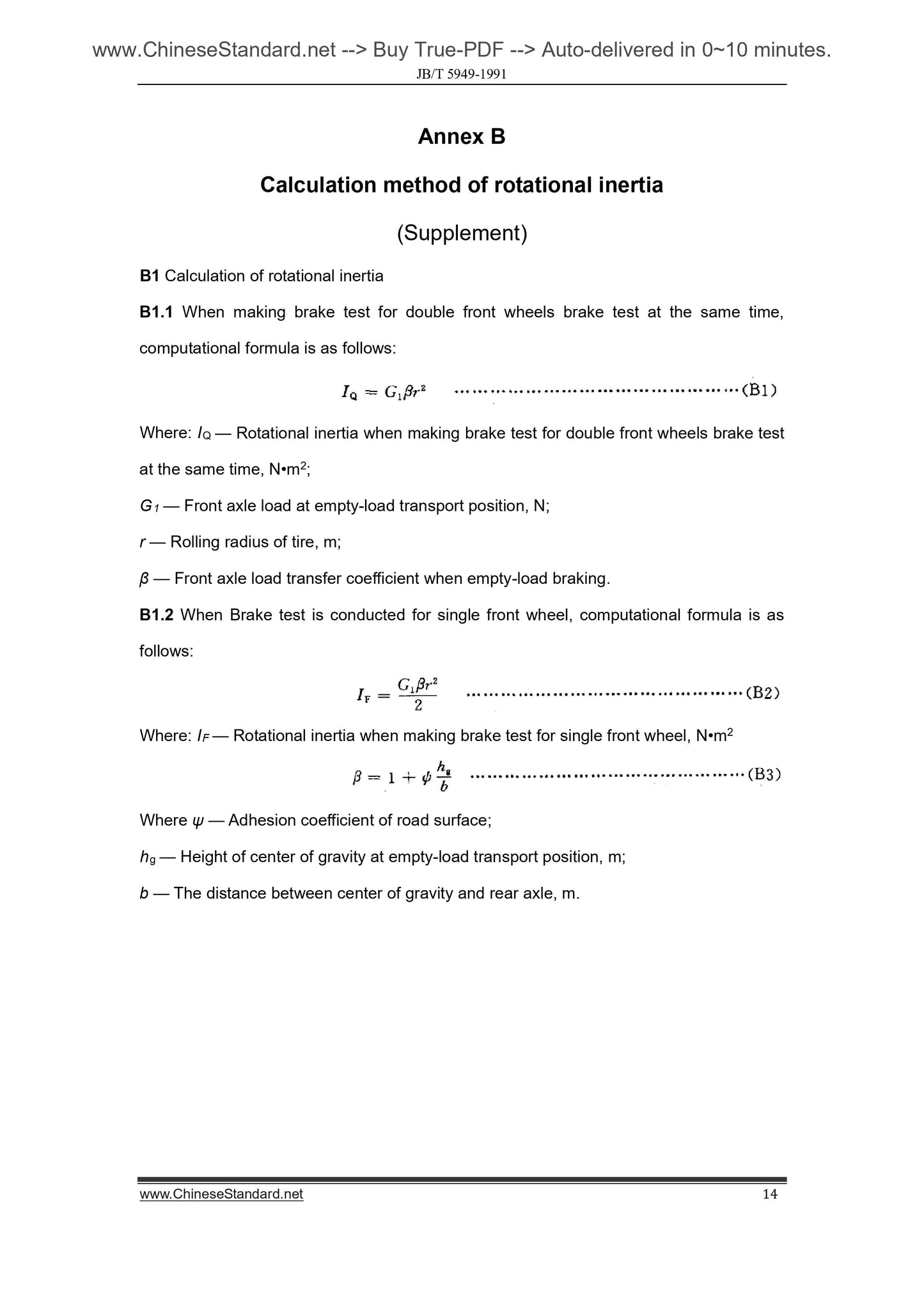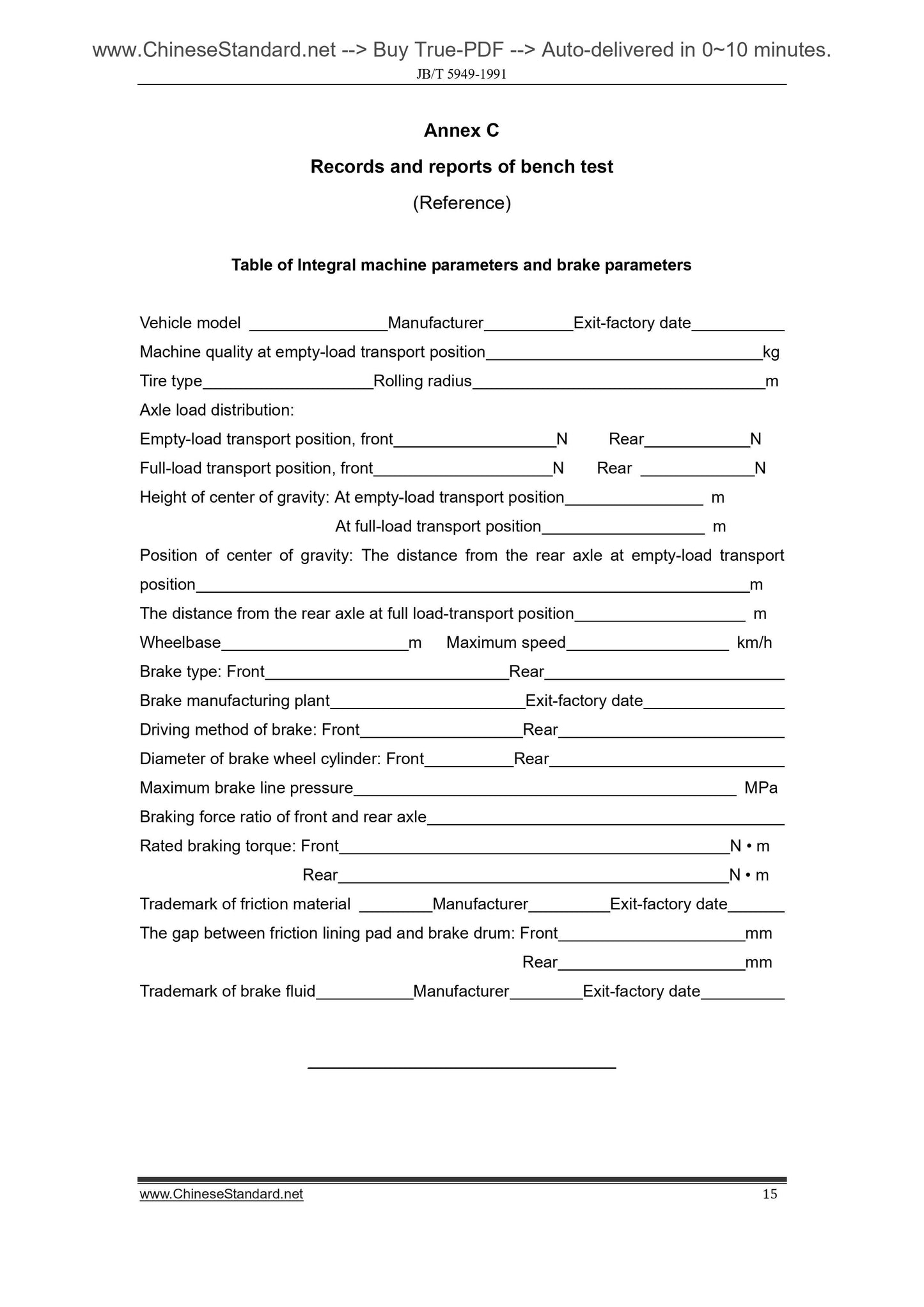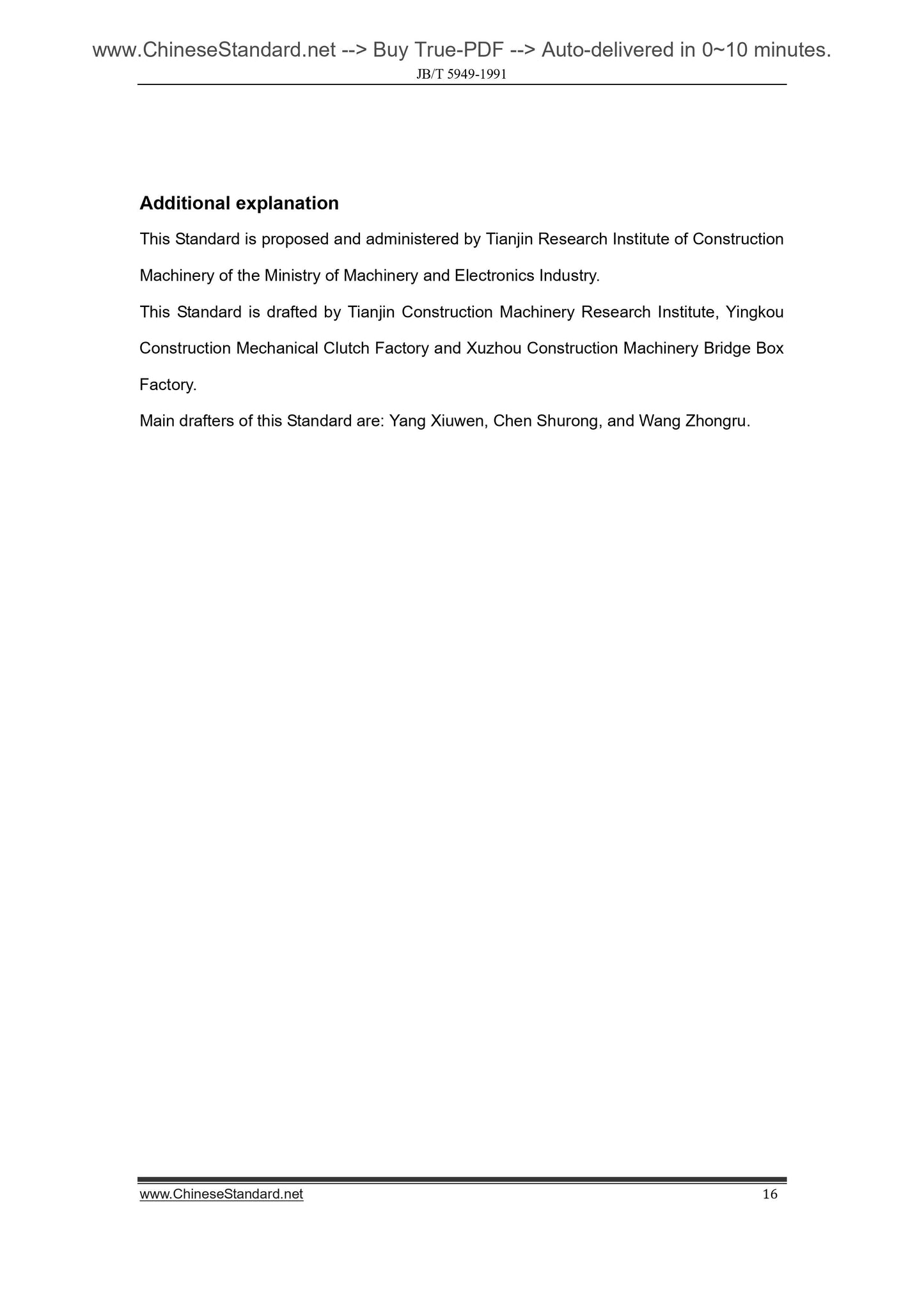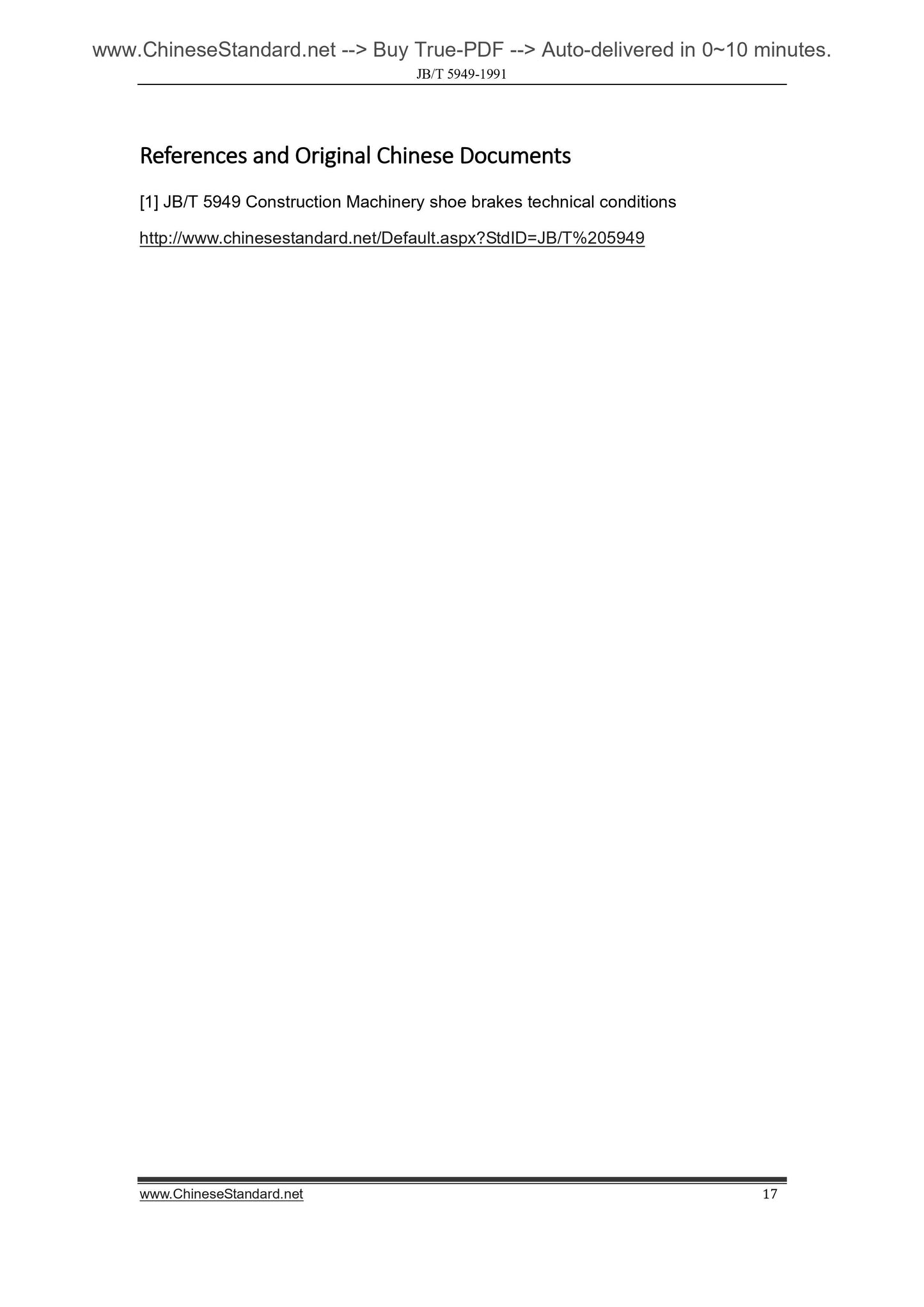1
/
of
8
www.ChineseStandard.us -- Field Test Asia Pte. Ltd.
JB/T 5949-1991 English PDF (JB/T5949-1991)
JB/T 5949-1991 English PDF (JB/T5949-1991)
Regular price
$85.00
Regular price
Sale price
$85.00
Unit price
/
per
Shipping calculated at checkout.
Couldn't load pickup availability
JB/T 5949-1991: Construction machinery shoe brake technical conditions
Delivery: 9 seconds. Download (and Email) true-PDF + Invoice.Get Quotation: Click JB/T 5949-1991 (Self-service in 1-minute)
Newer / historical versions: JB/T 5949-1991
Preview True-PDF
Scope
This Standard specifies the technical requirements, test methods, inspection rules,marking, packaging, transportation and storage for shoe brake of wheel type construction
machinery traveling crane brake system.
This Standard applies to shoe brake of wheel cranes, loaders, scrapers, backhoe loaders
and other wheel engineering machinery traveling crane brake system (hereinafter referred
to as the brake).
Basic Data
| Standard ID | JB/T 5949-1991 (JB/T5949-1991) |
| Description (Translated English) | Construction machinery shoe brake technical conditions |
| Sector / Industry | Mechanical and Machinery Industry Standard (Recommended) |
| Classification of Chinese Standard | P97 |
| Classification of International Standard | 53.100 |
| Word Count Estimation | 9,942 |
| Date of Issue | 1991-12-12 |
| Date of Implementation | 1992-07-01 |
| Regulation (derived from) | Ministry of Industry and Information Bulletin 2013 No. 23; industry standard for filing Notice 2013 No. 6 (No. 162 overall) |
| Summary | This standard specifies the technical requirements for construction machinery wheel brake shoe brake system, test methods, inspection rules and signs, packaging, transportation, storage and so on. This standard applies to mobile cranes, loaders, scrapers, backhoe loaders and other construction machinery wheel brake shoe brake system. |
Share
